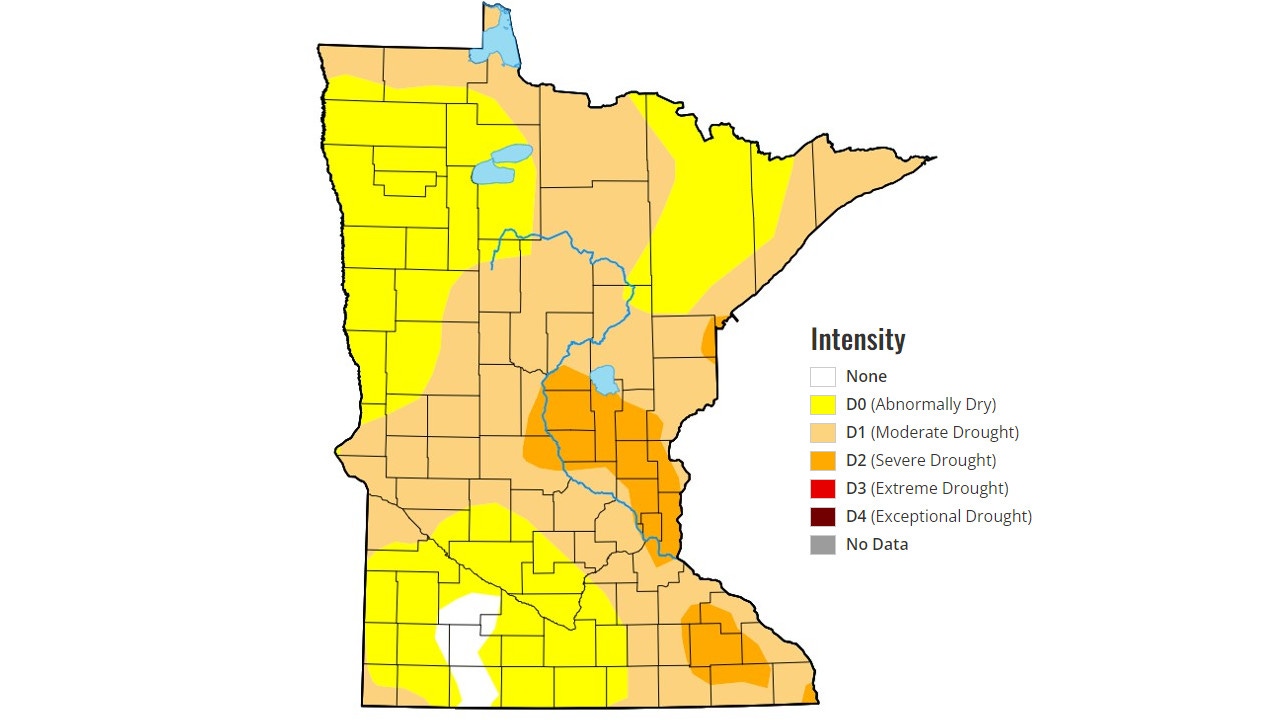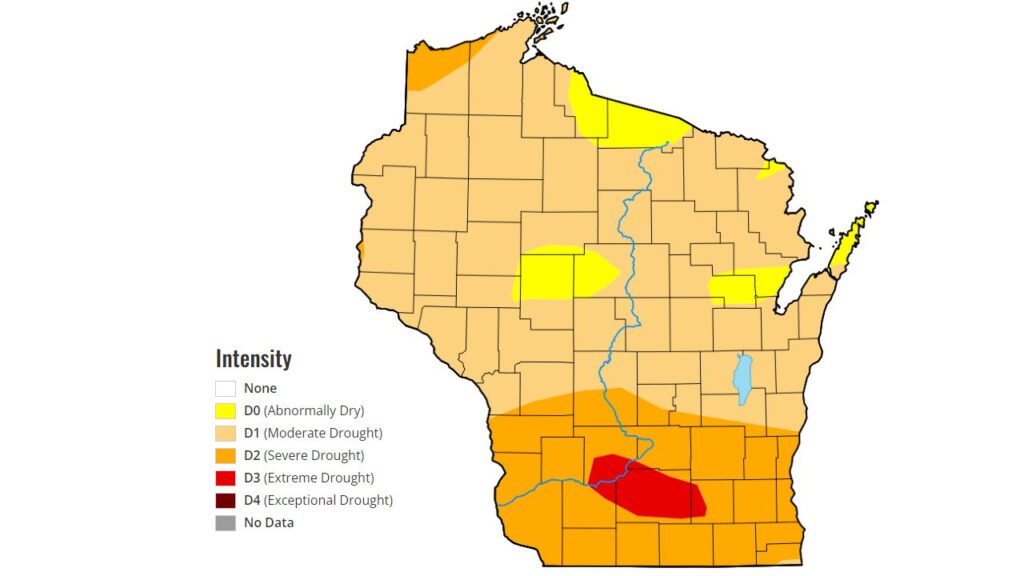Drought conditions continue to worsen across Minnesota, Wisconsin

This map from the U.S. Drought Monitor shows dry and drought conditions impacting Minnesota on July 6, 2023.
A lack of rainfall is causing dry and drought conditions to worsen across Minnesota and Wisconsin.
The U.S. Drought Monitor released its latest update Thursday morning, showing more areas are now in a drought than last month or even last week.
Three weeks ago, much of the northern part of the state was abnormally dry, with portions of the eastern edge and far western Minnesota experiencing a moderate drought and only 2.1% of the state in a severe drought. At that time, most of southern Minnesota wasn’t experiencing any dry conditions at all, although, overall, more than 77% of the state was at least dealing with abnormally dry conditions.
As of Thursday, less than 2% of the state was left with normal conditions while the moderate drought zone expanded to cover more than 56% of the state and the severe drought zone now covers around 8.5% of Minnesota.
One of the severe drought zones also covers parts of the east metro, stretching down to northern Dakota County, up through Ramsey, Washington and Anoka Counties, and then stretching west to northern Sherburne and Stearns Counties and as far north as Crow Wing County.
In Wisconsin, conditions got even worse. Three weeks ago, the state didn’t have any area in worse than a moderate drought, although 88% of the state was dealing with abnormally dry conditions and about 25% of the state in a moderate drought.
As of Thursday, the entire state was dealing with at least abnormally dry conditions, 92.75% was in at least a moderate drought, more than 27% was in a severe drought zone and another 2.74% was dealing with extreme drought conditions.

While Minnesota’s Weather Authority forecasts beautiful weather for the rest of the week, there is also not a lot of rain headed our way, outside of a chance for some showers Friday night.
The Drought Monitor notes that even abnormally dry conditions stress crops and increase fire danger, and that only worsens as conditions get drier.
Click here to see the latest report.